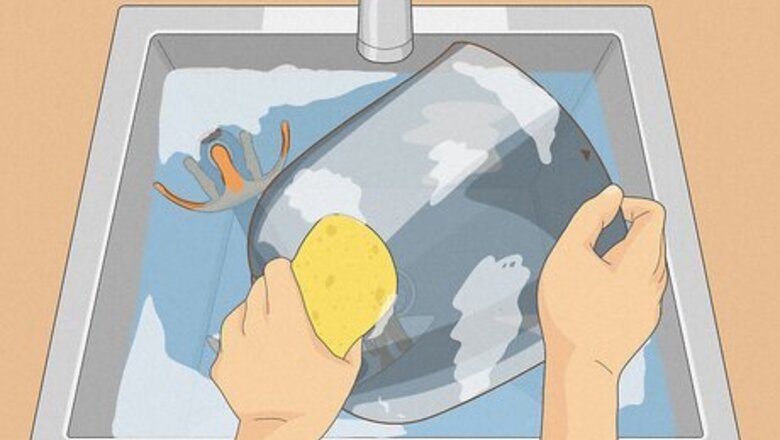
views
Hand-Washing a Baby Brezza Bottle Sterilizer
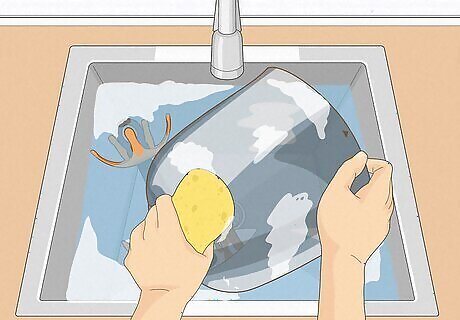
Wash the lid and bottle tree with warm water and dish soap. Fill a sink with warm water and a few drops of dish soap. Remove the plastic lid and orange bottle tree from the sterilizer and submerge it in the water, then use a sponge or brush to scrub them clean. Rinse both with clean water and allow them to air dry completely. Unfortunately, none of the Baby Brezza Sterilizer components are dishwasher-safe.
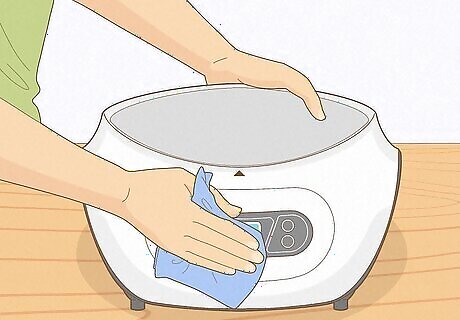
Wipe down the base, heating plate, and buttons with a damp cloth. Dip a clean cloth in warm water and dish soap and ring it out. Wipe down the base, the metal heating plate, and the control console on the front of the Sterilizer. Try to clean your Baby Brezza Sterilizer at least once a week. Wipe the same areas with a damp clean cloth or paper towel to make sure all the soap is removed. Alternatively, dip the cloth in a solution of ⁄2 cup (120 mL) warm water and ⁄2 cup (120 mL) white distilled vinegar to help remove any mineral deposits.
Descaling a Baby Brezza Bottle Sterilizer
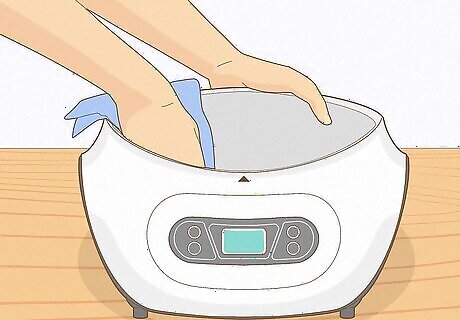
Unplug your sterilizer and wipe up any water on the metal heating plate. Make sure the heating plate is completely cool before disassembling your sterilizer. Use a clean dry cloth to soak up any remaining water on or around the heating plate. Try to descale your Baby Brezza sterilizer at least once a month. Descaling breaks down minerals left behind from the water, which can discolor the heating plate inside and affect its performance over time. If you find rust-colored or white deposits on the heating plate, it’s most likely caused by mineral deposits.
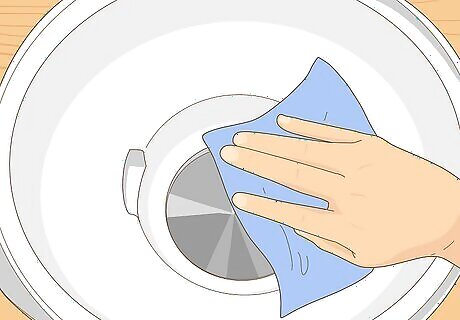
Wipe the metal heating plate with a damp soft cloth. Wet a clean cloth with water and wipe down the heating plate in the center of the sterilizer and the plastic tray around it. This helps remove any large mineral chunks that might not dissolve in the descaling process. Since the water is boiled to make steam, most of the mineral residue collects on the heating plate—however, you can descale the bottle tree and lid if you see hard water spots on them. Fill a sink with equal parts water and vinegar, let them soak for 10 minutes, and wash them with dish soap and warm clean water.
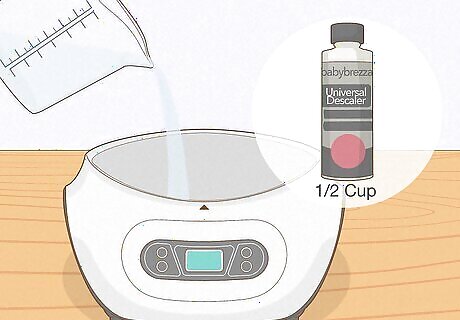
Pour descaler or ⁄2 cup (120 mL) of vinegar on the heating plate. Baby Brezza recommends pouring ½ a bottle of their descaler on the heating plate, but you can also use ⁄2 cup (120 mL) of white distilled vinegar. Pour the solution directly onto the heating plate and on any mineral deposits around it. If your sterilizer has a dryer, make sure to pour away from the fan opening, following the direction that the arrow points on the base. Both descaler and vinegar contain citric acid that removes limescale and other mineral build-up. However, the descaler is odorless while the vinegar’s smell may take time to dissapate.
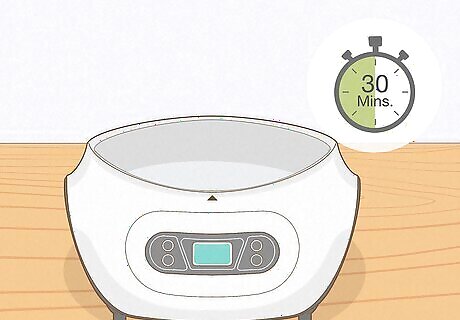
Let the heating plate sit for 30 minutes, then wipe with a dry cloth. Use a dry cloth to soak up the remaining descaler or vinegar. You can also wet a paper towel or cloth with water and use it to clean up any excess descaler or vinegar. Optionally, pour distilled water to the line in the base and turn on a sterilizing cycle to make sure all the vinegar or descaler is evaporated. Some brown or discolored spots might remain on the heating plate, but they’re harmless. They’re most likely burnt spots that do not make the sterilizer unsafe to use.
Keeping your Baby Brezza Bottle Sterilizer Clean
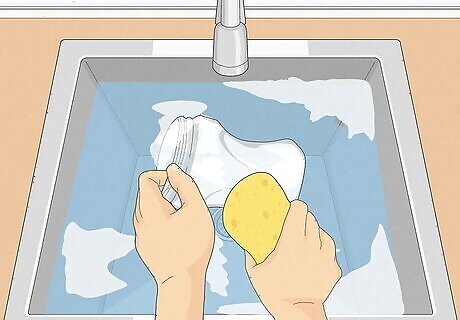
Clean all bottles, pacifiers, and other items before sterilizing them. The Baby Brezza Sterilizer and the Sterilizer Dryer don’t wash baby products. Before placing any items inside, wash them thoroughly with a sponge, warm water, and dish soap. If you put unwashed bottles and other baby products in your sterilizer, the items might not be washed properly. Milk and other liquids left on baby products can burn the heating plate, making it more difficult to clean.
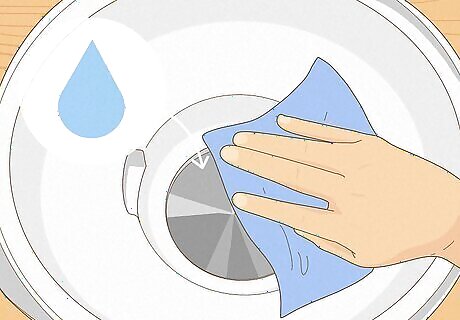
Wipe the heating plate with a soft damp cloth after every cycle. Wiping down your sterilizer after each use can help avoid mineral build-up. Unplug the machine and wait for it to cool completely before removing the lid and bottle tree. Wet a cloth with warm water and wipe down the heating plate. Alternatively, wet the cloth with 1 part white distilled vinegar and 1 part warm water.
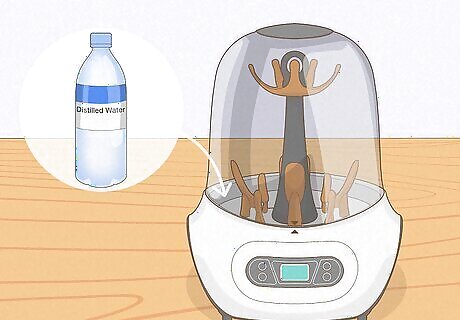
Fill the base with distilled water to avoid mineral scale build-up. The mineral scale comes from the minerals inside tap water or spring water after it dries. Over time, this build-up can reduce the life of equipment. To avoid this, try to use distilled water in your sanitizer. If you do use tap or spring water, you may have to clean your sterilizer more frequently. Aim to descale it about every week.




















Comments
0 comment